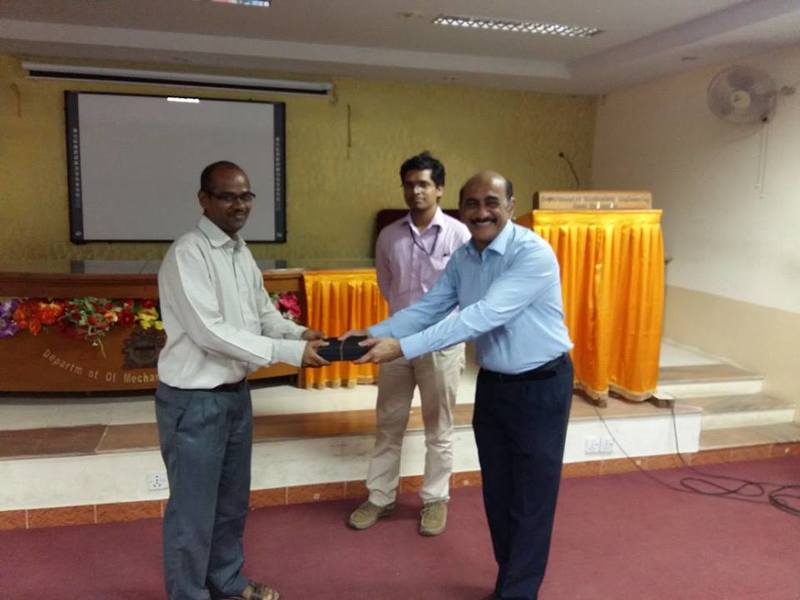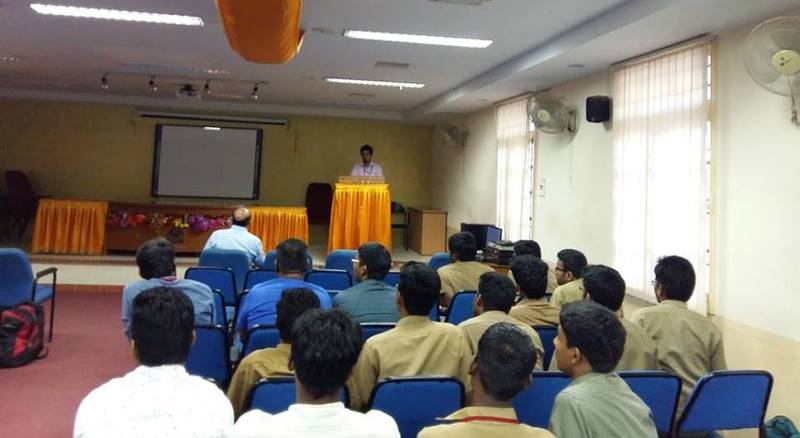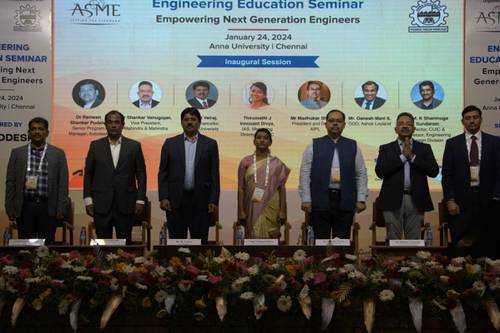Is public speaking really an art? Does it require years of practice to become an appealing public speaker? How much does language barrier influence the skill of speaking to the masses? The answers to all these questions and much more were discussed in detail during the guest lecture on ‘The Art of Public Speaking’ by Mr. M. Keshav, founder and CEO of MANTRA, an organization specializing in L&D facilitation. The lecture, organized by the Department of Mechanical Engineering and Society of Mechanical Engineers, was held at the Henry Maudslay Hall at 4:00 P.M on 26th February, 2016.
 The speaker started off the discussion on a lighter note by comparing public speaking and listening to cooking and eating, respectively. “Public speaking is like cooking; it is an art. Not everybody can excel in it. But, listening is like eating; everybody can perform the task very easily”, quipped he, before throwing light on the various aspects of public speaking elaborately.
The speaker started off the discussion on a lighter note by comparing public speaking and listening to cooking and eating, respectively. “Public speaking is like cooking; it is an art. Not everybody can excel in it. But, listening is like eating; everybody can perform the task very easily”, quipped he, before throwing light on the various aspects of public speaking elaborately.
Mr. Keshav compartmentalized the sources that lead to effective communication into three broad categories, namely primary school (25%), good listening (40%) and repeated attempts in speaking to various degree of crowds (35%). He also reiterated the fact that self-belief is one significant prerequisite that makes an effective speaker, quoting Tamil theatre personalities like Crazy Mohan, Visu and S.Ve.Sekar, adding that they could succeed in a not-so-popular-format-in-the-present-scenario only because of their confidence.
According to the speaker, one can adapt to the skill of public speaking through various visible and latent factors.
Conscious competence - The necessity of speaking when one doesn’t have other choices. He quoted the fact that the degree of listening of a person develops right from the period when he/she is in the womb of the mother.
Unconscious competence – The skills inherently present in oneself without one’s knowledge at all. While driving away this fact home, he jovially stated that while a listener yawning during a session might not be good manners, it is a kind of feedback note to the speaker reinstating that he is too monotonous and boring.
Emotional competence – This deals with the degree of relativity between the presenter and the listener. External factors like the kind of situation, the time of the session and environmental factors like air conditioners also influence this factor.
This was followed by the simple yet subtle manner in which the guest distinguished between a speaker and listener. “The people in the audience have the advantage of staying unknown to the speaker, in the comfort zone. Try to come out of it and into the challenging zone” said he, stressing that only those who are willing to take up challenges seriously can become good speakers. In this regard, he also mentioned the three B’s to be followed: Believe, Behave and Become.
The other aspects that were briefed upon during the evening were:
- The speech where the audience get a lot of takeaways and positive vibrations is way better than the one where the speaker rakes in a lot of money.
- One must be knowledgeable in the topic one speaks on; this is termed functional skill.
- A speech must never start with an apologetic note like, “I am sorry, but I am not sure how much I am relevant to the topic I am going to speak”. It is not a good practice to look for data in the podium at the last moment before speaking.
- Eye contact and body language are the two eyes of public speaking. While eye-to-eye contact is an inseparable part in one-to-one speaking, emphasis must be given in focusing on the forehead of the people in public speaking.
- Human relations and attitude – the speaker must neither underestimate nor overestimate the thought processes of the audience.
Again, this was succeeded by the three V’s required to enhance the impact of public speaking
Verbal – simple terms are always long lasting; try to avoid using complex, multi-syllabled words. Mr. Keshav quoted the Radio Jockies as exemplary personalities for this aspect, as the listeners tend to reach out more to the catchy, understandable phrases uttered by them.
Vocal – the speech must have adequate modulations to eliminate the possibility of sounding monotonous. He emphasized this using the ECG which reaches the top and bottom most positions when a person is actively alive, and comes to a standstill only when a human is dead.
Visual – the speaker must be able to influence extensive impact and excitement in the audience.
Finally he concluded with the statement, “Public speaking is an art of how you say something rather than what you say”, for which he underlined the Smriti Irani controversy of the recent days. Overall, this was one valuable Friday evening for all the students who participated in this active discussion and returned beneficiaries.





